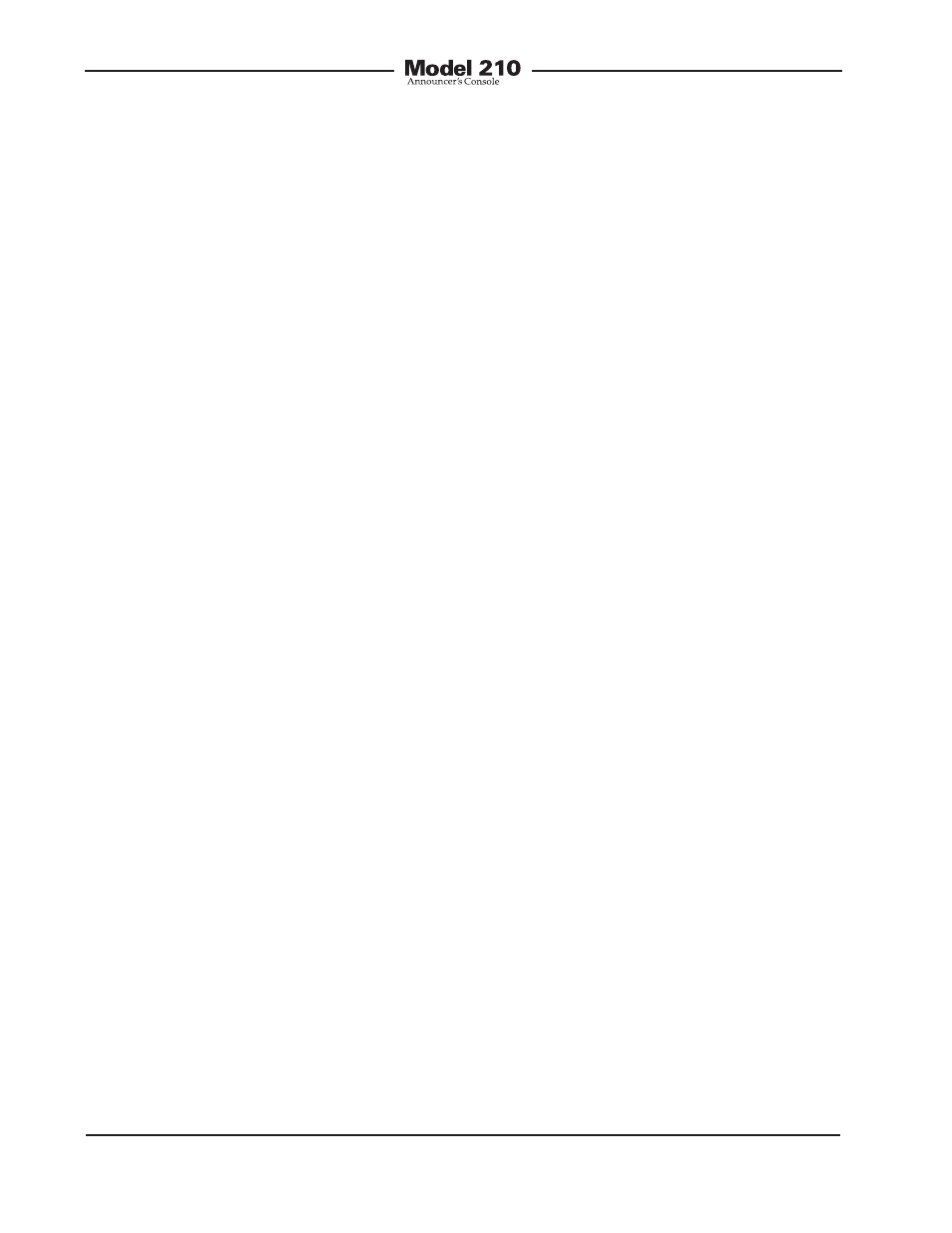Main and talkback outputs, Dynamic range control, User controls and status indicators – Studio Technologies 210 2008 User Manual
Page 6: Flexibility

Issue 4, October 2008
Model 210 User Guide
Page 6
Studio Technologies, Inc.
with balanced dynamic or condenser mi-
crophones. The microphone power source
is 48 volts nominal and meets the world-
wide P48 phantom power standard. An
LED indicator serves as an aid for optimiz-
ing the setting of the preamplifier’s gain.
The output of the microphone preamplifier
is used by the main output as well as be-
ing routed to the compressor circuit that
supports the talkback function.
Main and Talkback Outputs
The Model 210 provides one main and
one talkback output. The main output is
designed to serve as the on-air, stadium
announcement, or other primary audio
feed. Nominally –2 dBu, it is designed
as a fully professional interface with high
output capability, low distortion, and low
noise. It features a high-quality transformer
expressly designed for driving long broad-
cast cable runs. The talkback output is
intended to provide production trucks,
control rooms, or support personnel with a
talent-originated cue signal. The talkback
output is transformer-coupled with a +4
dBu nominal signal level. It contains resis-
tors in series with its output connections,
allowing the talkback output from multiple
units to be directly “summed.”
For non-on-air applications, a special
Model 210 feature can be enabled, plac-
ing the unit in a “production” mode. This
allows the main output to be used as a
second talkback output. In this configura-
tion the unit can be even more powerful
when used in a live event application,
such as serving as a master console for a
production director.
Dynamic Range Control
A studio-quality compressor circuit is pro-
vided to control the dynamic range
of the signal coming from the microphone
preamplifier. Far from a simple “clipper,”
the circuit utilizes a sophisticated laser-
trimmed voltage-controlled-amplifier (VCA)
integrated circuit for quiet, low-distortion
level control. The signal from the compres-
sor is always used by the talkback output.
In addition, the audio source for the main
output can be selected to be either the
output of the microphone preamplifier or
the output of the compressor. While possi-
bly not appropriate for major on-air situa-
tions, having dynamic range control of the
main output can offer increased perfor-
mance for many applications. These could
include stadium announcement positions,
sports events using nonprofessional on-air
talent, and situations where cable cross-
talk is of concern.
User Controls and Status
Indicators
Two pushbutton switches, three LED indi-
cators, and two rotary controls provide
the user with a clear, easy-to-use interface.
One pushbutton switch controls the status
of the main output. This is the audio out-
put intended for on-air, announcement, or
other primary uses. Two LEDs display the
on/off status of the main output. A second
pushbutton switch controls the status
of the talkback output. This is the audio
output used to communicate with produc-
ers, directors, spotters, or other behind-
the-scenes production personnel. A status
LED is associated with the talkback but-
ton. Two rotary controls allow the user to
adjust the level of the headphone output.
Flexibility
A large part of the Model 210’s unique
power is the ability to configure the
operation of the main output and
